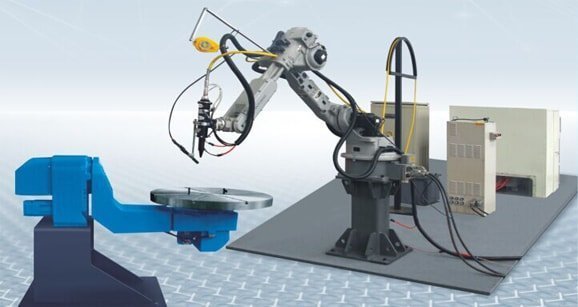Table of Contents

(1)_Power_density
Power density is one of the most critical parameters in laser processing.
With a higher power density, the surface layer can be heated to the boiling point in the microsecond time range, resulting in a large amount of vaporization.
Therefore, high power density is advantageous for material removal processing such as punching, cutting, and engraving.
For lower power densities, the surface temperature reaches the boiling point and takes several milliseconds.
Before the surface layer is vaporized, the bottom layer reaches the melting point, and it is easy to form a good fusion weld.
Therefore, in conduction laser welding, the power density is in the range of 10^4~10^6W/CM^2.
(2) Laser pulse waveform
Laser pulse waveforms are an important issue in laser welding, especially for sheet welding.
When a high-intensity laser beam is incident on the surface of the material, the metal surface will be reflected by 60 to 98% of the laser energy and the reflectivity will vary with the surface temperature.
During a laser pulse action, the metal reflectivity changes greatly.
(3) Laser pulse width
Pulse width is one of the important parameters of pulse laser welding.
It is an important parameter that is different from material removal and material melting, and is also a key parameter that determines the cost and volume of processing equipment.
(4) The effect of the defocus amount on the weld quality
Laser welding usually requires a certain amount of defocus because the power density at the center of the spot at the laser focus is too high and it is easy to evaporate into holes.
The power density distribution is relatively uniform across the planes exiting the laser focus.
There are two ways of defocusing: positive defocusing and negative defocusing.
The focal plane is located above the workpiece for positive defocusing, and vice versa for negative defocus.
According to the theory of geometric optics, when the distance between the positive and negative defocus planes and the welding plane are equal, the power density on the corresponding plane is approximately the same, but the shape of the molten pool obtained is actually different.
In the case of negative defocusing, a greater penetration can be obtained, which is related to the formation of the molten pool.
Experiments have shown that the laser heating 50~200us material begins to melt, forming liquid phase metal and partially vaporizing, forming high pressure steam, and spraying at a very high speed, emitting dazzling white light.
At the same time, the high concentration vapor moves the liquid metal to the edge of the bath and forms a depression in the center of the bath.
When negative defocusing, the internal power density of the material is higher than the surface, and it is easy to form a stronger melting and vaporization, so that the light energy is transmitted to the deeper part of the material.
Therefore, in practical applications, when the penetration depth is required to be large, negative defocusing is used; when welding thin materials, positive defocusing is preferred.
(5) Welding speed
The speed of the welding speed will affect the heat input per unit time.
If the welding speed is too slow, the heat input is too large, causing the workpiece to burn through.
If the welding speed is too fast, the heat input amount is too small, causing the workpiece can’t be welded well.
Copyright © Jiangsu Hoston Machine Tools Co., Ltd. (Hongkong Hoston Group CO., LIMITED)All Rights Reserved | Sitemap Technical Support: 